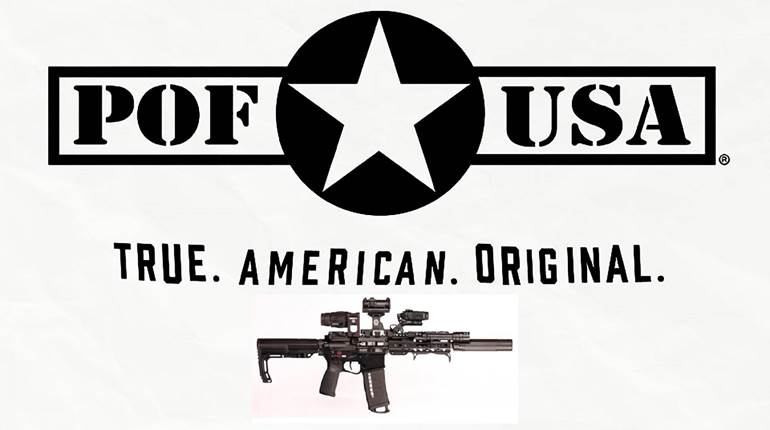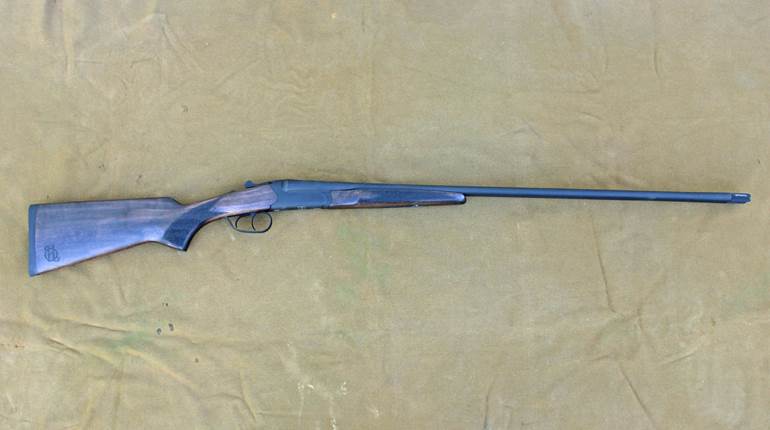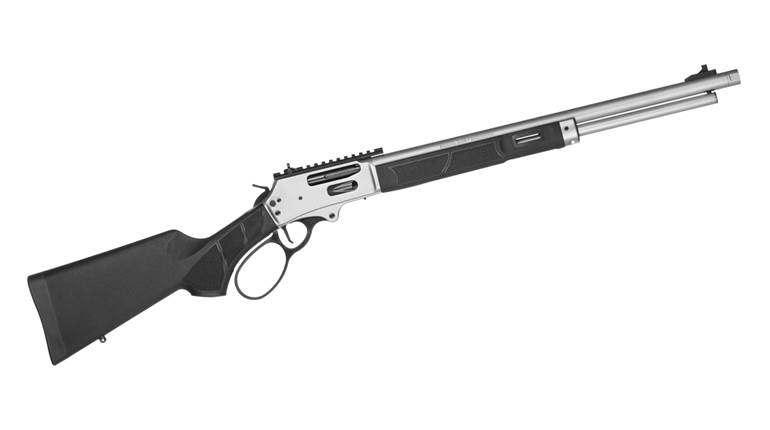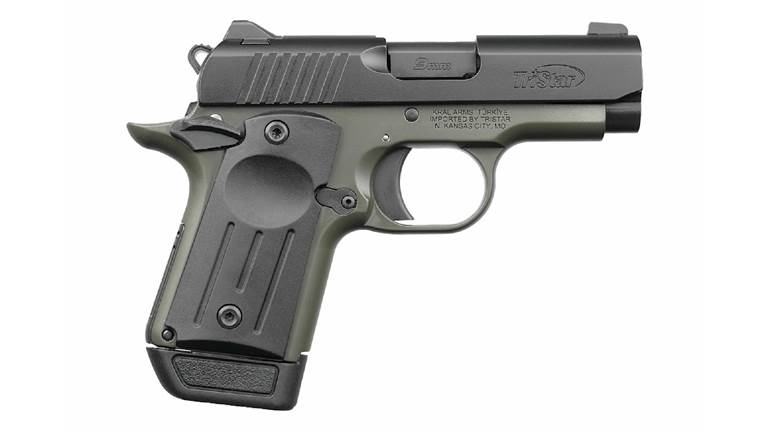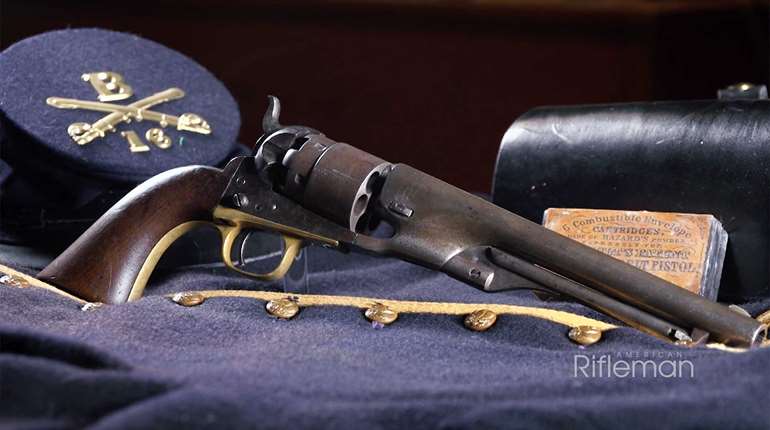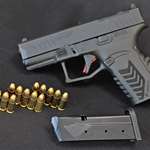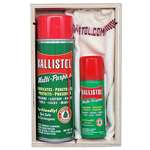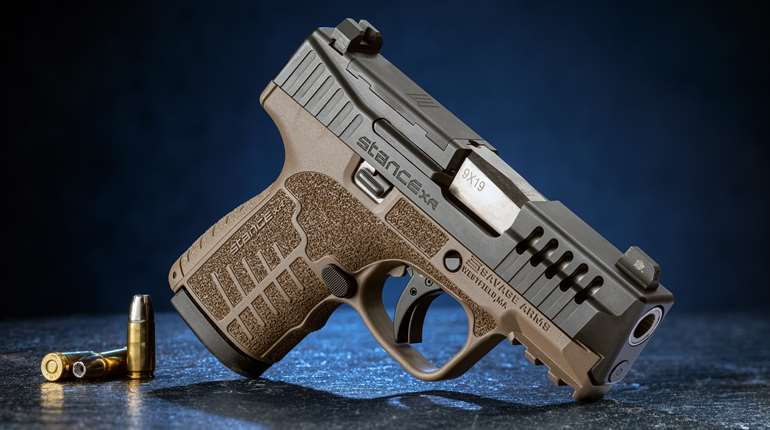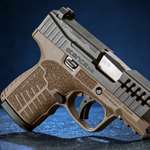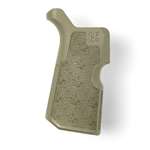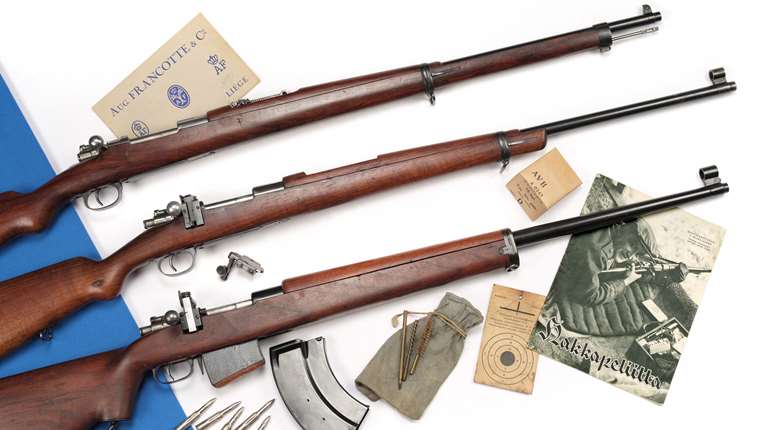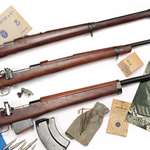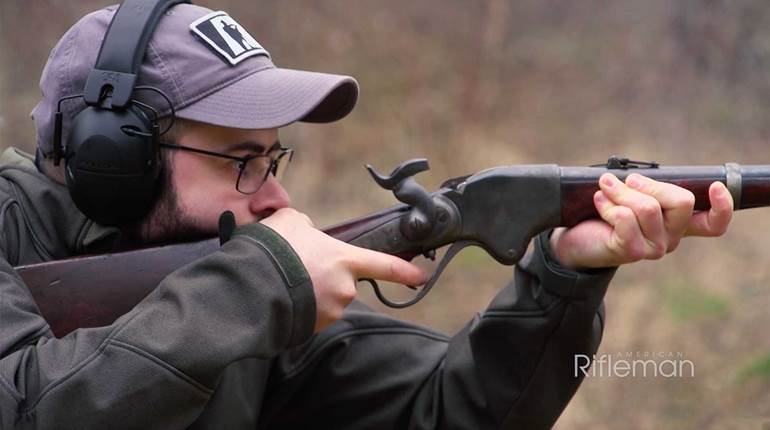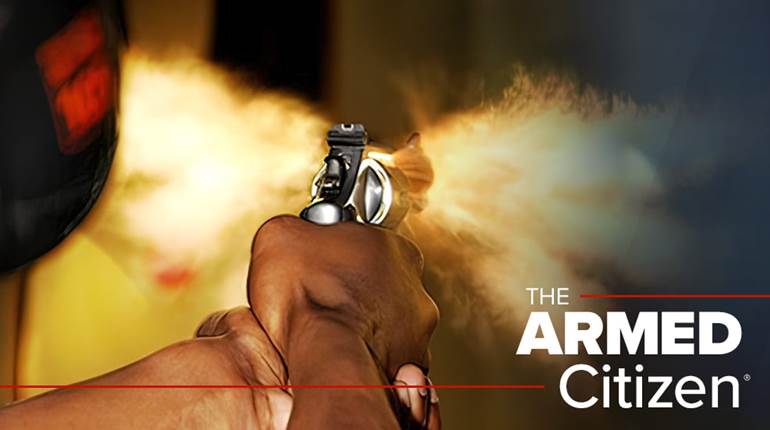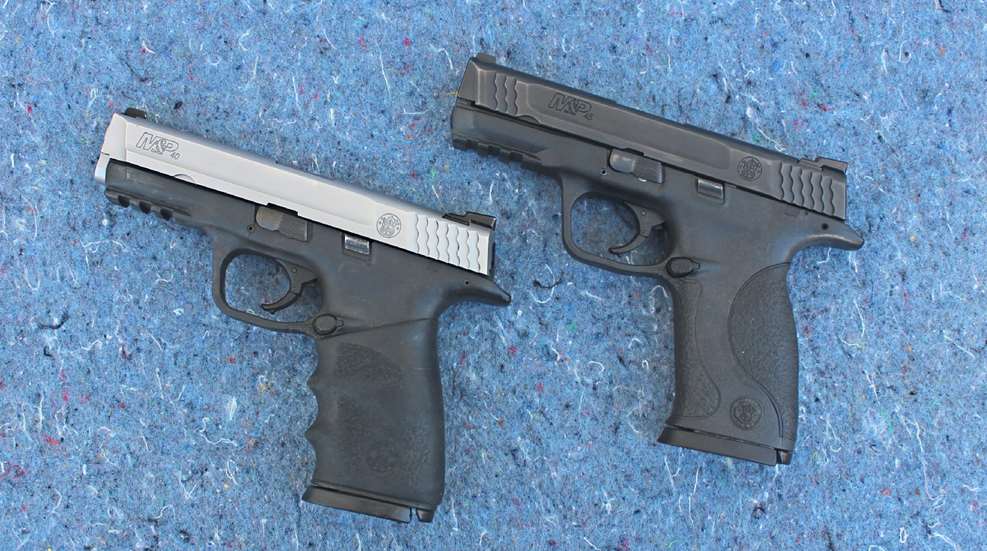
Although it was about 30 years ago now, I still remember how excited I was to pull together my first handgun rig. A friend of mine had invited me to a local shooting range attached to a "cop shop" to try out his revolver. It was a snub-nose .38 Special that was loud and cantankerous to shoot, and I was hooked before emptying the cylinder down range for the second time.
Once the handgunning bug bites, folks rarely settle for owning just one. However, money was tight at the time, since I was working and going to school part-time. The cop shop had a display case full of law enforcement trade-in revolvers. Among them was a set of Smith & Wesson Model 686 .357 Mag. six-shot revolvers with 4" barrels recently retired from the state Fish & Wildlife department priced at around $225 to $250, depending on their condition and the grip. Luckily, they stuck around long enough for me to scrape up the cash to buy one.
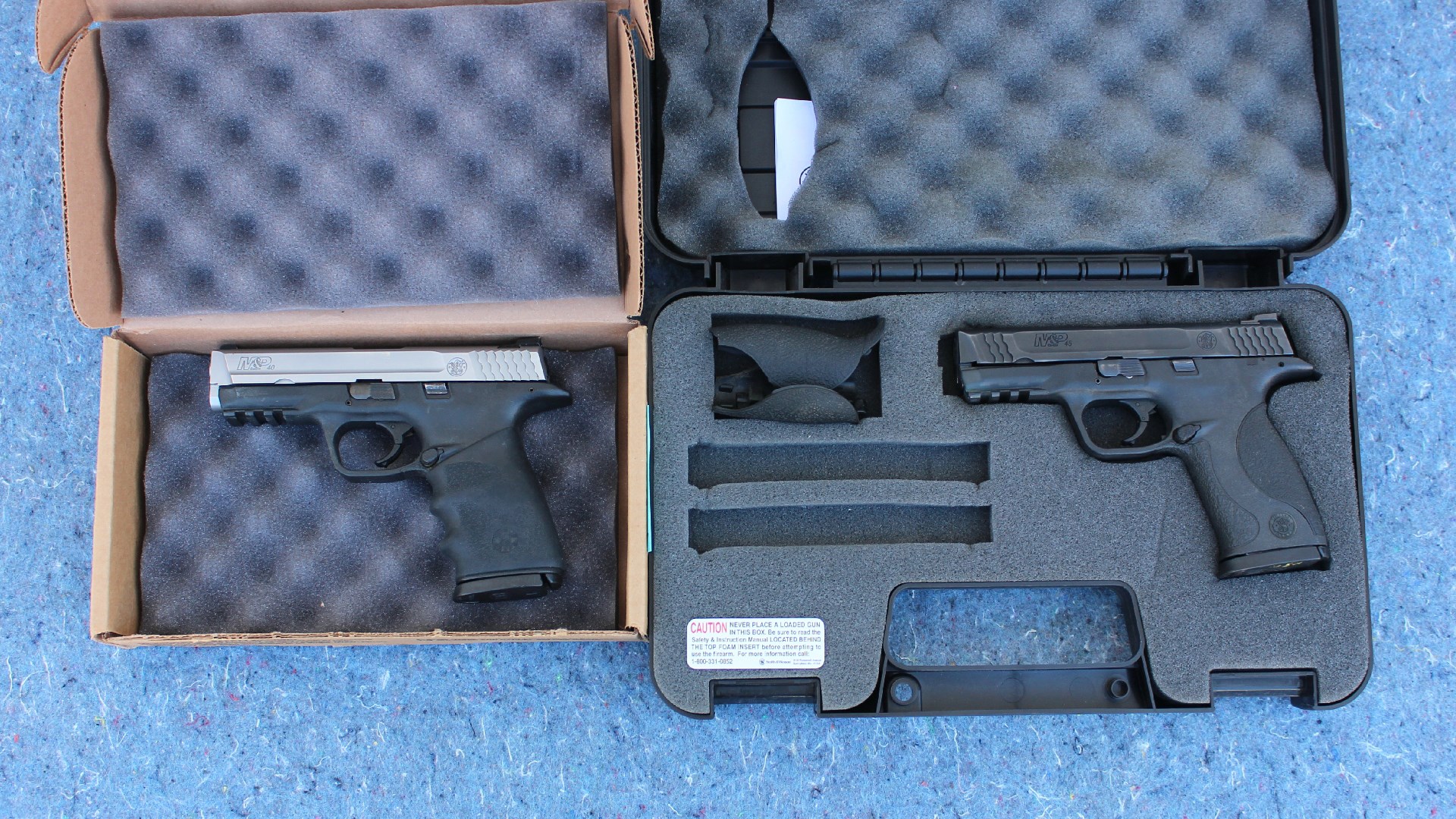
But the revolver alone was not going to be enough. I wanted to pull together a set of support gear so that I could start running some drills that included drawing from a holster, reloading with speed loaders and so on. Once again, the cop shop came through with a couple of used gear bins tucked up against one of the side walls. I got to digging and pulled out an odd hybrid ballistic nylon belt holster, a beat up holster belt, a snap-flap dual speedloader pouch, and my friend behind the counter helped me out by throwing in a couple of used HKS speedloaders.
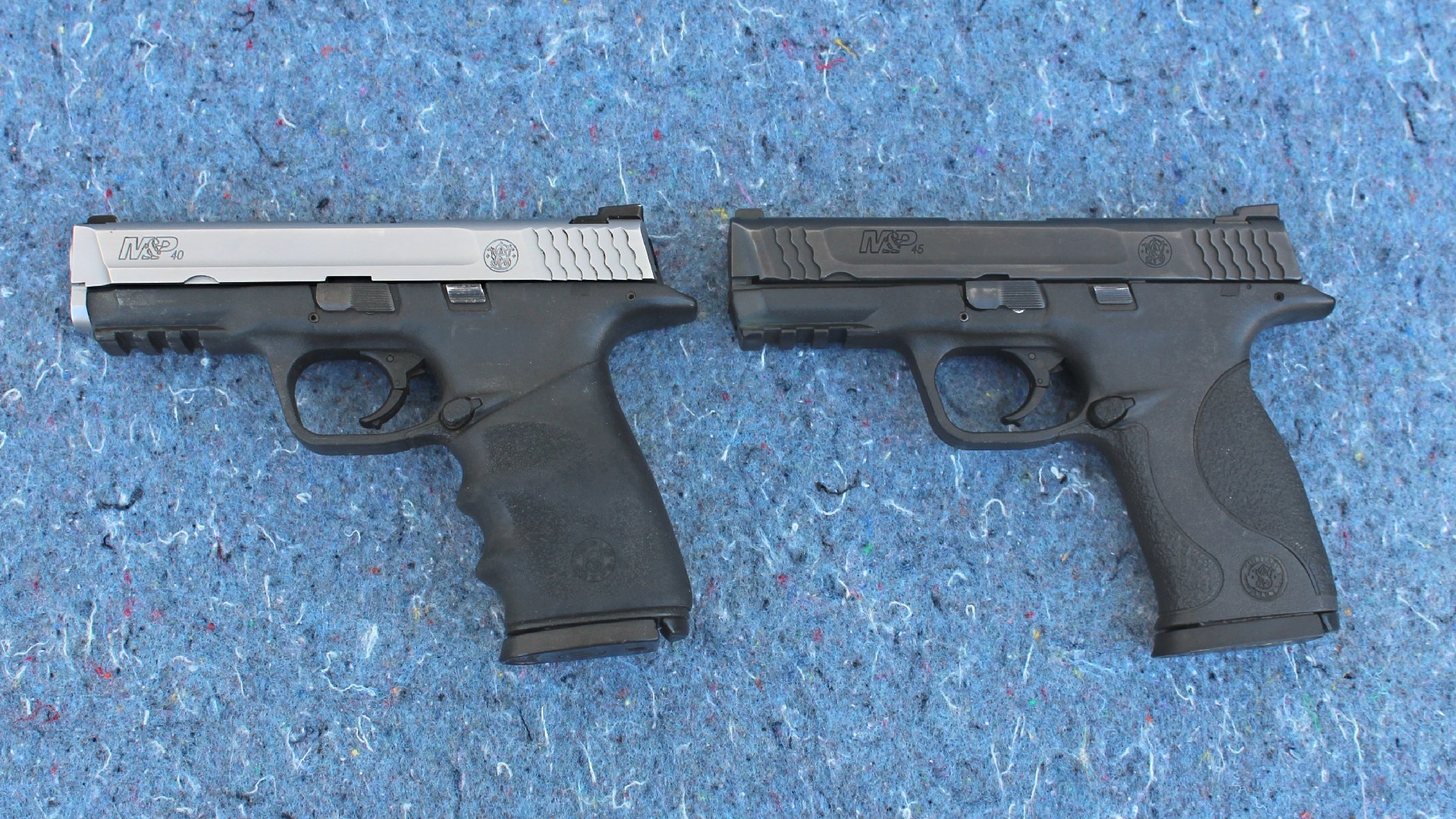
That first rig was mismatched, well worn, fairly ugly and all mine! Best of all, the revolver and the used support gear together cost just less than $300 out the door. Yes, my motley rig and the "old fashioned" wooden grip of the S&W 686 drew some snickers from fellow shooters at the range. But it was this early affordable shooting setup that opened the door for what would start out as a hobby, grow into a shooting sports passion and eventually become a career.
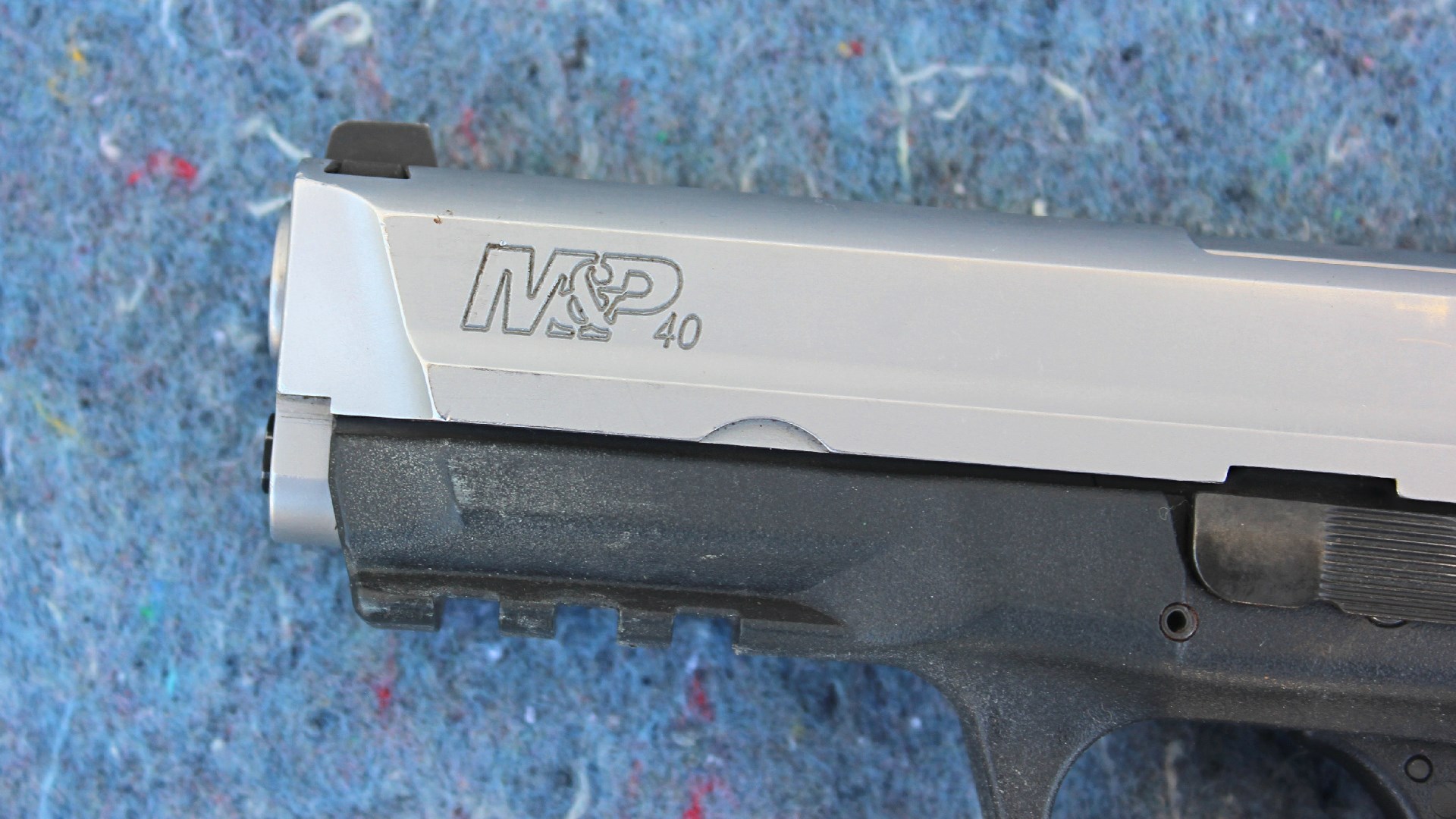
Folks who are new to shooting sports learn a hard truth right up front: it's not cheap. Handgunning was not an inexpensive pursuit back then, and it's not exactly a low-cost endeavor today. I've often wondered, with current market trends and product pricing, is it still possible for folks on a tight budget to pull together a useful, multi-purpose rig assembled around a well-made, used gun? And to my genuine surprise, the answer can be yes, if you look in the right places.
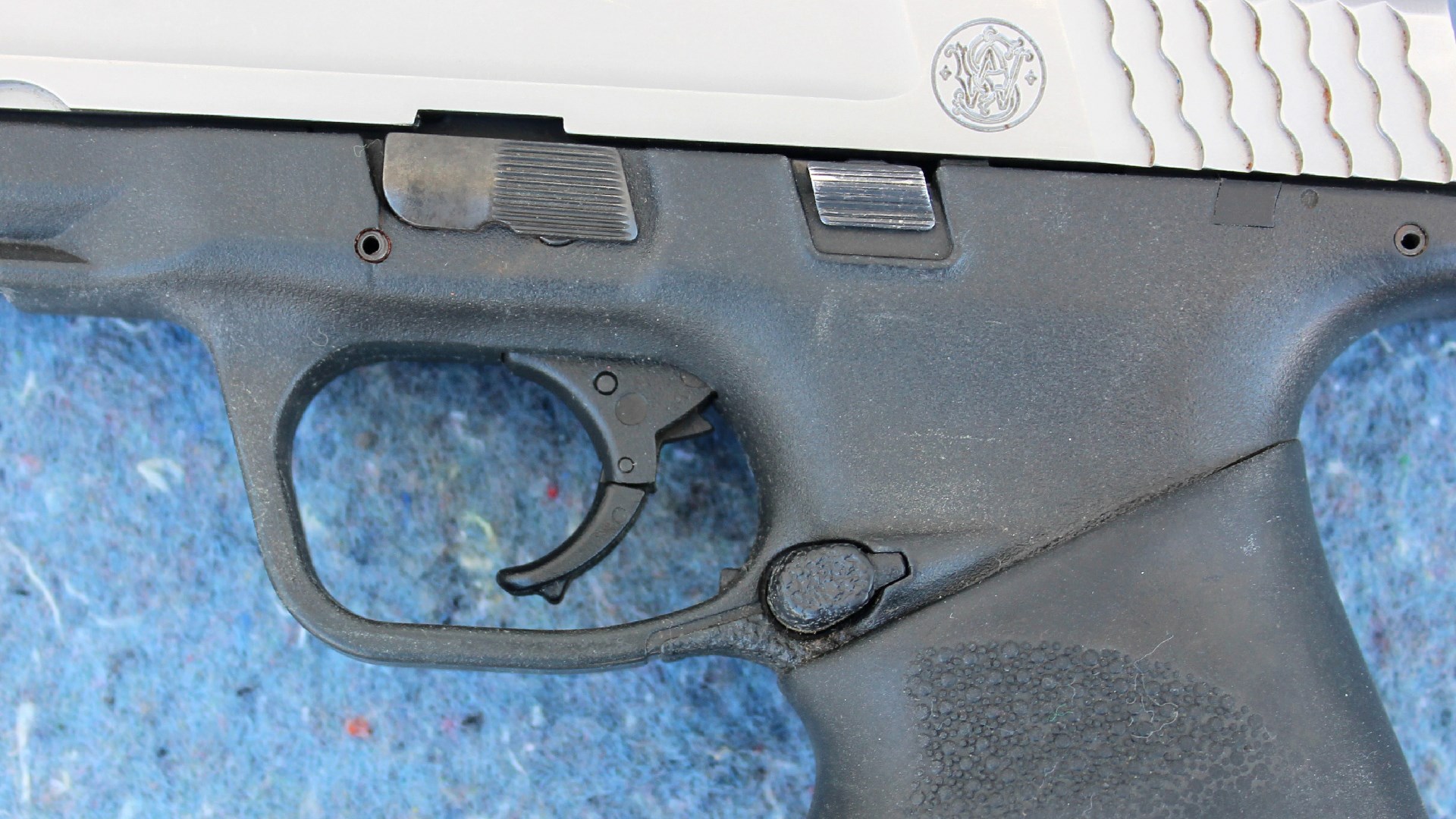
Recently, I received an email flyer from AIM Surplus that listed items on sale that week, including law enforcement trade-in Smith & Wesson M&P pistols, used magazines and other support gear. I scrolled through the note, looked through it again and then started clicking the links to make sure I was reading the numbers correctly. What I saw was a .40 S&W pistol with four used magazines, a new Kydex belt holster and matching dual magazine pouch all together for $294.70 (before taxes and shipping). For the .45 ACP fans, the same setup was available for $367.70. It sounded almost too good to be true. I reached out to the AIM Surplus team and requested a set of gear to test drive to see what kind of bang they would provide for customers’ bucks.
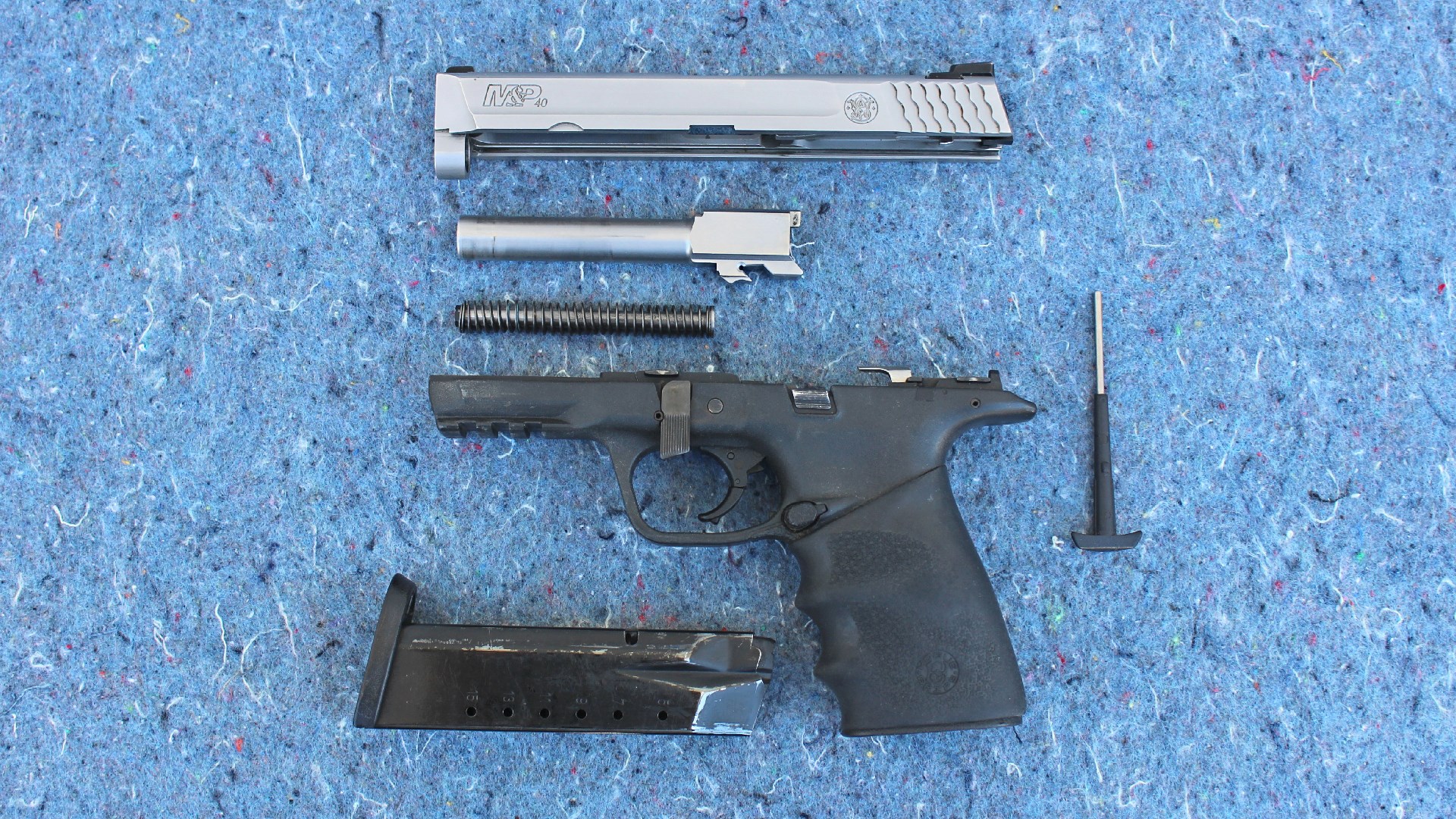
LE Trade-In Smith & Wesson M&P Pistols
Introduced in 2005, the Smith & Wesson M&P (Military & Police) was the first polymer-frame, striker-fired pistol for the company. It incorporated design elements and features borrowed from the earlier Sigma and SW99 models. New features included an improved trigger feel and a no-trigger-pull takedown method in order to set it apart from the Glock pistol design. The M&P lineup has since expanded into a variety of caliber, size and model options, including the M&P Shield, M&P Bodyguard and M&P 2.0 options. The M&P became standard issue for many police forces, as well as some armored truck companies, and is commonly used by civilians for home and self defense.
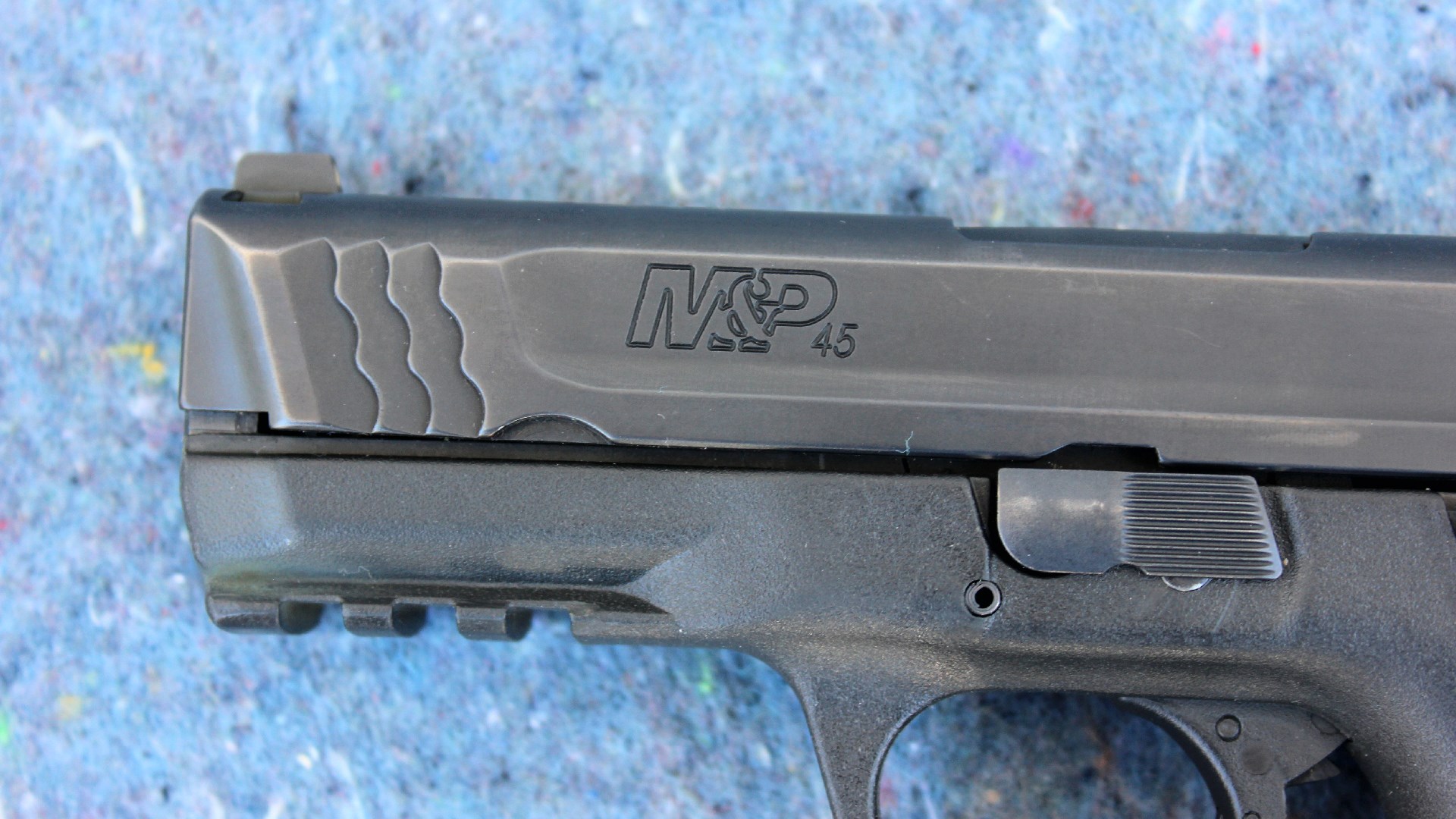
The .40 S&W and .45 ACP M&P pistols sent for this evaluation are both early duty-size models with full-size polymer frames. Their shared features include stainless steel slides and barrels, distinctive scalloped slide serrations, dustcover accessory rails, hinged triggers and the familiar M&P control layout. One-piece stainless steel guide rods capture the singular flat wire recoil springs.
Both guns have magazine safeties that prevent them from firing when the magazine is removed from the grip. Twisting out the takedown pin, located in the grip frame, allows the interchangeable backstraps to be swapped out. The footprint and magazine profiles for this pair are similar enough that they can share the same holsters and magazine pouches.
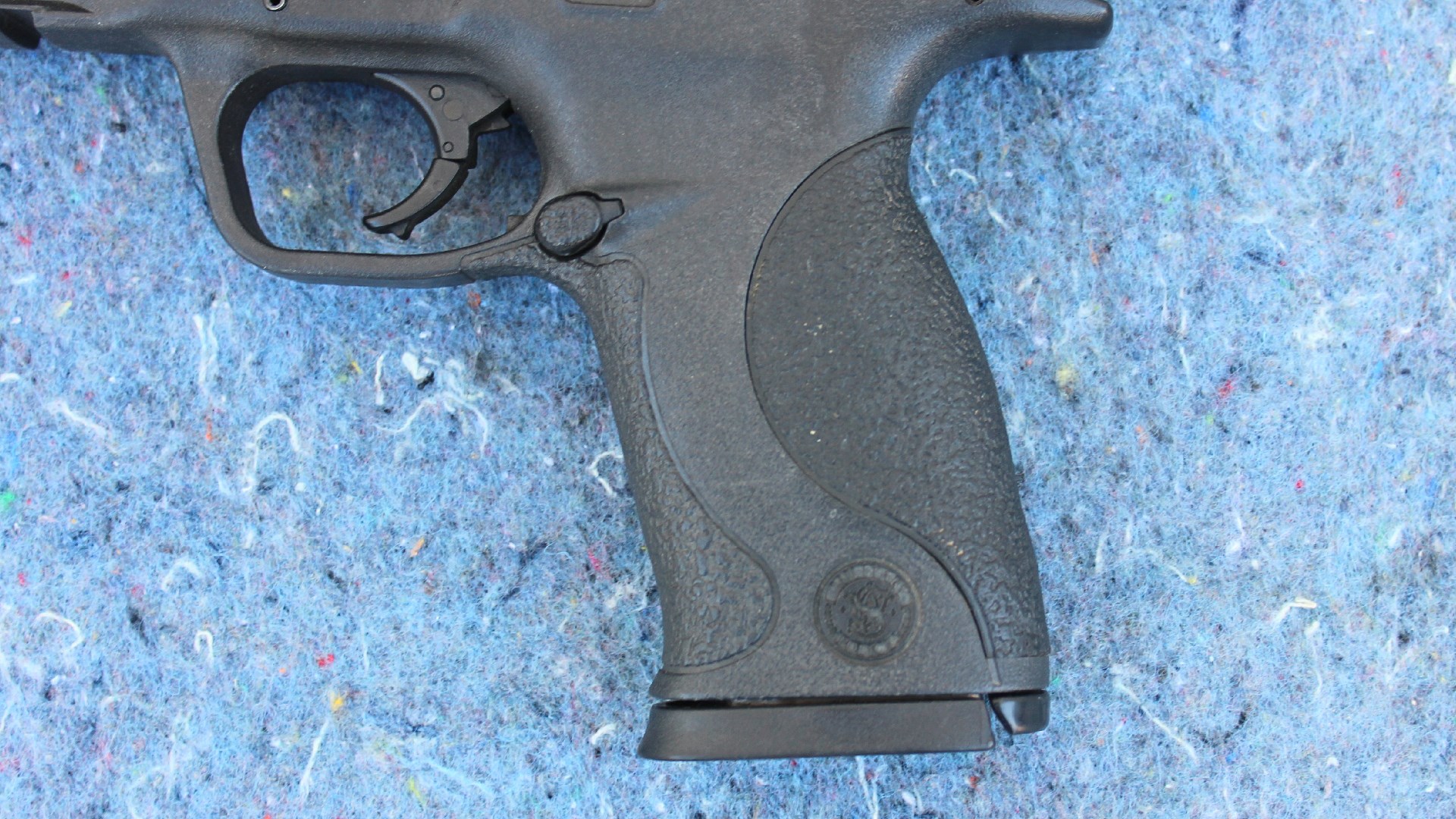
However, there are a few notable differences. Some features are from the factory, while others are due to these particular pistols’ enigmatic work history. The .40 S&W is a somewhat unusual two-tone model with a natural silver finish for the slide and the 4.25" barrel. The slide is topped with a low-profile, three-dot sight set and has only one set of cocking serrations at the rear. It arrived in a cardboard box with one 15-round blued steel magazine and an aftermarket Hogue HandALL rubber grip sleeve installed. It weighed in at 28.5 ozs., with an empty magazine. The trigger pull was 5 lbs., 4 ozs. according to a Lyman digital gauge. At the time of this writing, this particular trade-in was listed for $229.95.
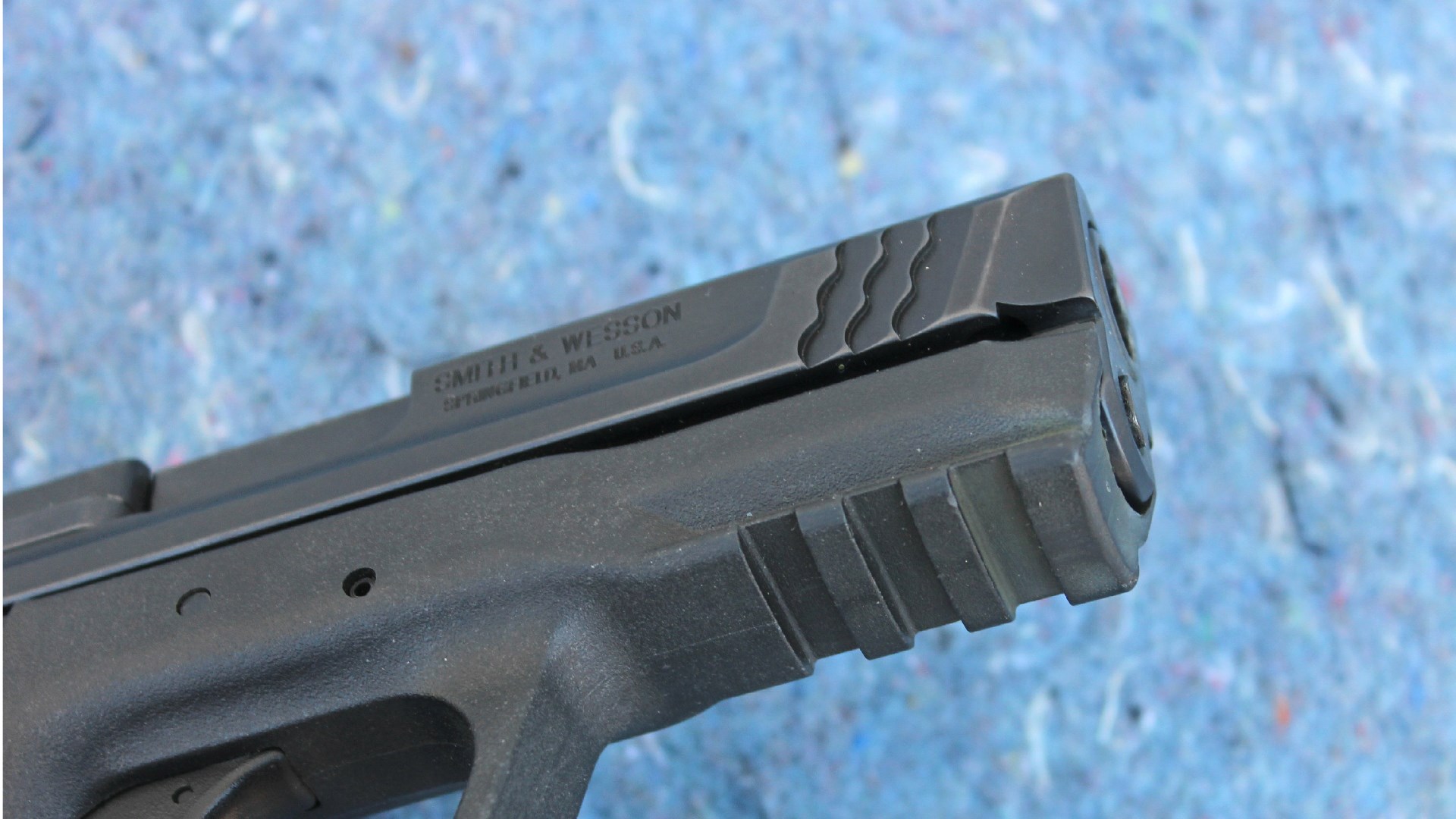
The M&P .45 ACP that I received is the mid-size version with a 4" barrel and black-finished slide assembly. The slide features front and rear cocking serrations along with factory installed M&P night sights that have lost their glow. This pistol arrived in its original foam lined case along with three backstrap inserts and one 10-round double-stack magazine. With an empty magazine, it weighed in at 27.5 ozs. and exhibited a 5-lb., 5-oz. trigger pull. The listed price for the .45 ACP was $299.95. NRA Media Editor-In-Chief Mark Keefe posted a video review of this model back in 2010 that can be viewed here.
It's not uncommon for LE trade-in pistols to be a bit grubby around the edges and to exhibit some degree of holster wear. However, the two guns sent for this review were in tip-top shape with little wear and only minor cleaning needed. Inside, they were impressively clean but wholly free of any lubrication. A quick bit of oiling and they were ready for a set of bench checks, which they passed with flying colors.
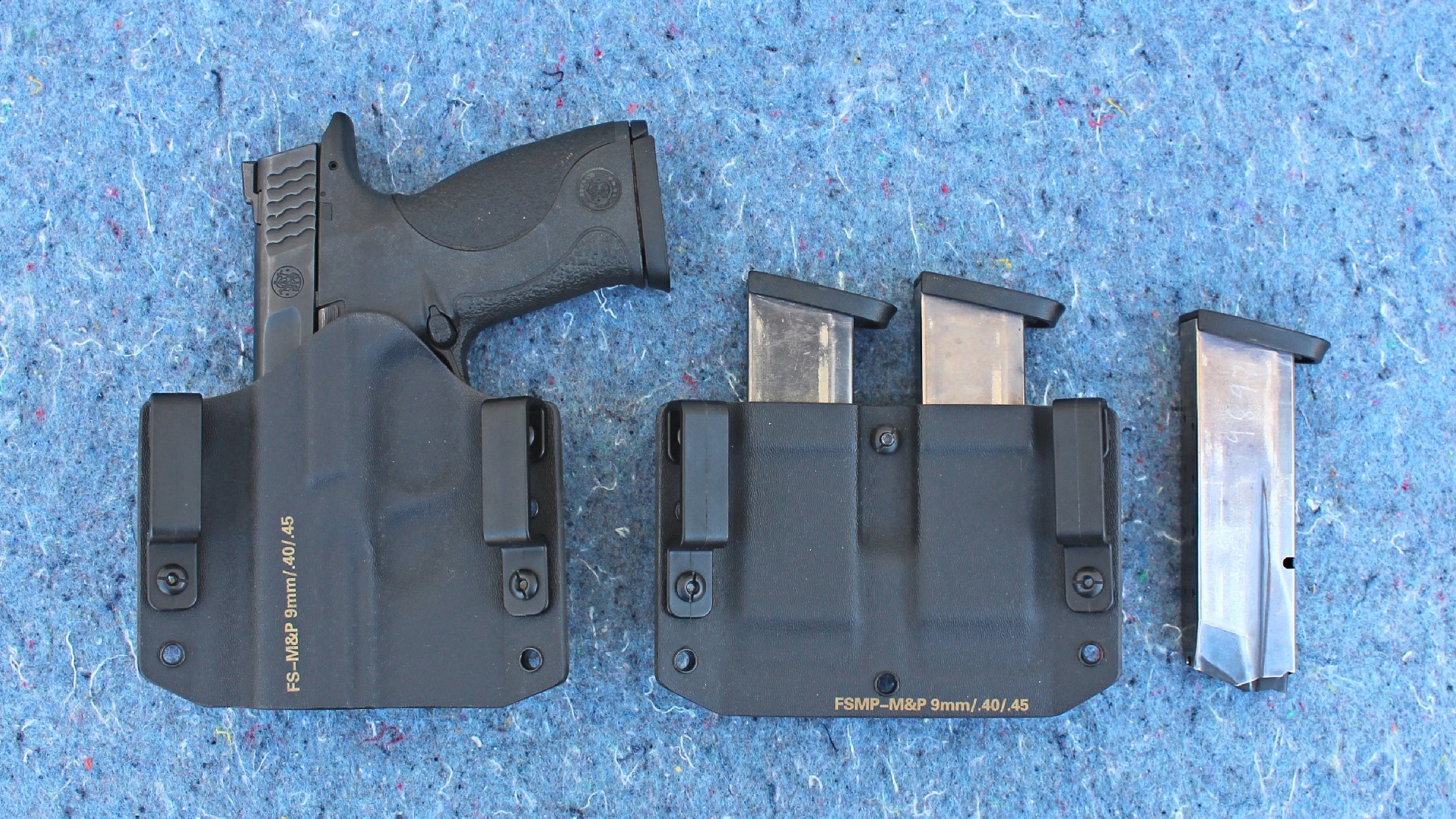
Trade-in Magazines, Front Sight Holsters & Magazine Pouches
Just how many magazines one should have on hand for a given pistol is often debated. Most gun gurus agree that just one is never enough and two is only a bare minimum. For those who carry one in the gun and two spares, a total of six is a good fit. Three are in use while three are resting (if you are in the camp that chooses to rest magazine springs). But for those who carry one in the gun and a singular spare on the hip, a total of four magazines is a good place to start.
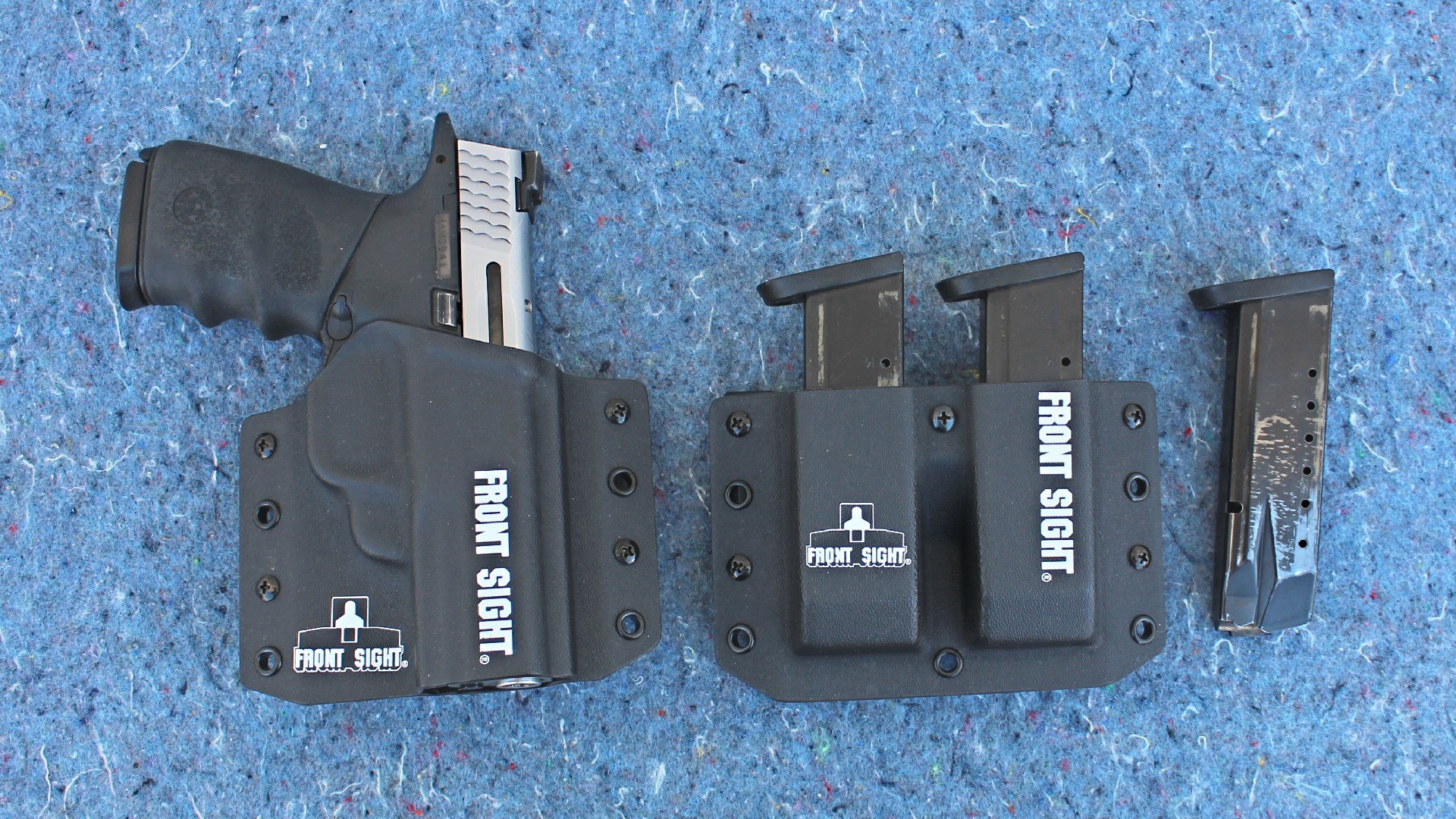
In this case, the pistols shipped with just one magazine. Thankfully, AIM Surplus also had a supply of trade-in magazines. Compatible factory-fresh S&W magazines for these guns are currently listed for $42 to $49. The LE trade-in .40 S&W magazines were available for $13.95 with the .45 ACP magazines selling for $14.95 which made for about a 3-to-1 difference in cost. I went ahead and added three more magazines for each pistol to the order.
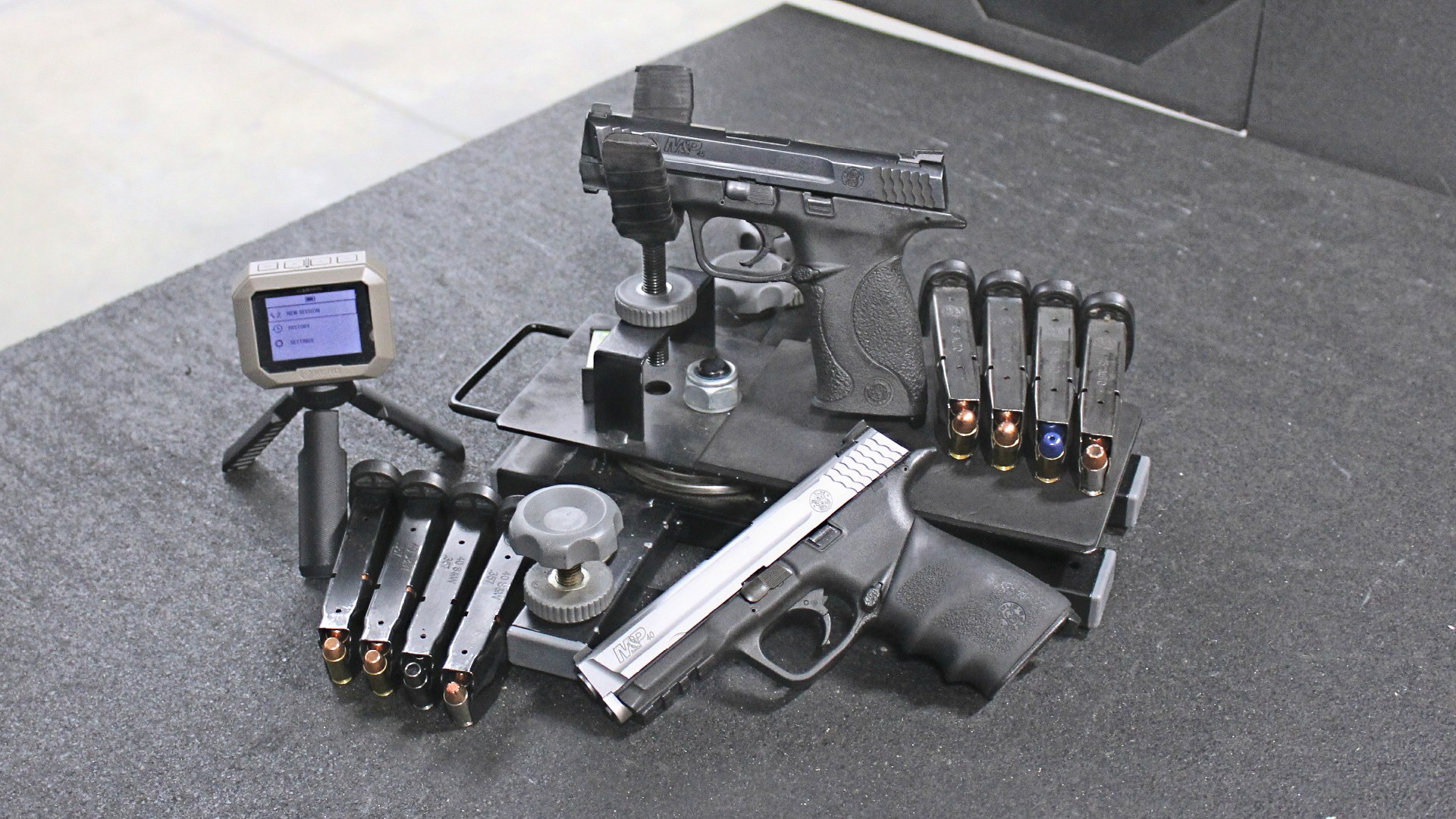
I continue to be impressed at the confidence some Kydex holster makers express by giving their products such, shall we say, "robust" pricing? If a company is asking $89 or more for a relatively simple outside-the-waistband (OTW) holster, then I hope it comes with some handy added features like "files your taxes" or "washes windows."
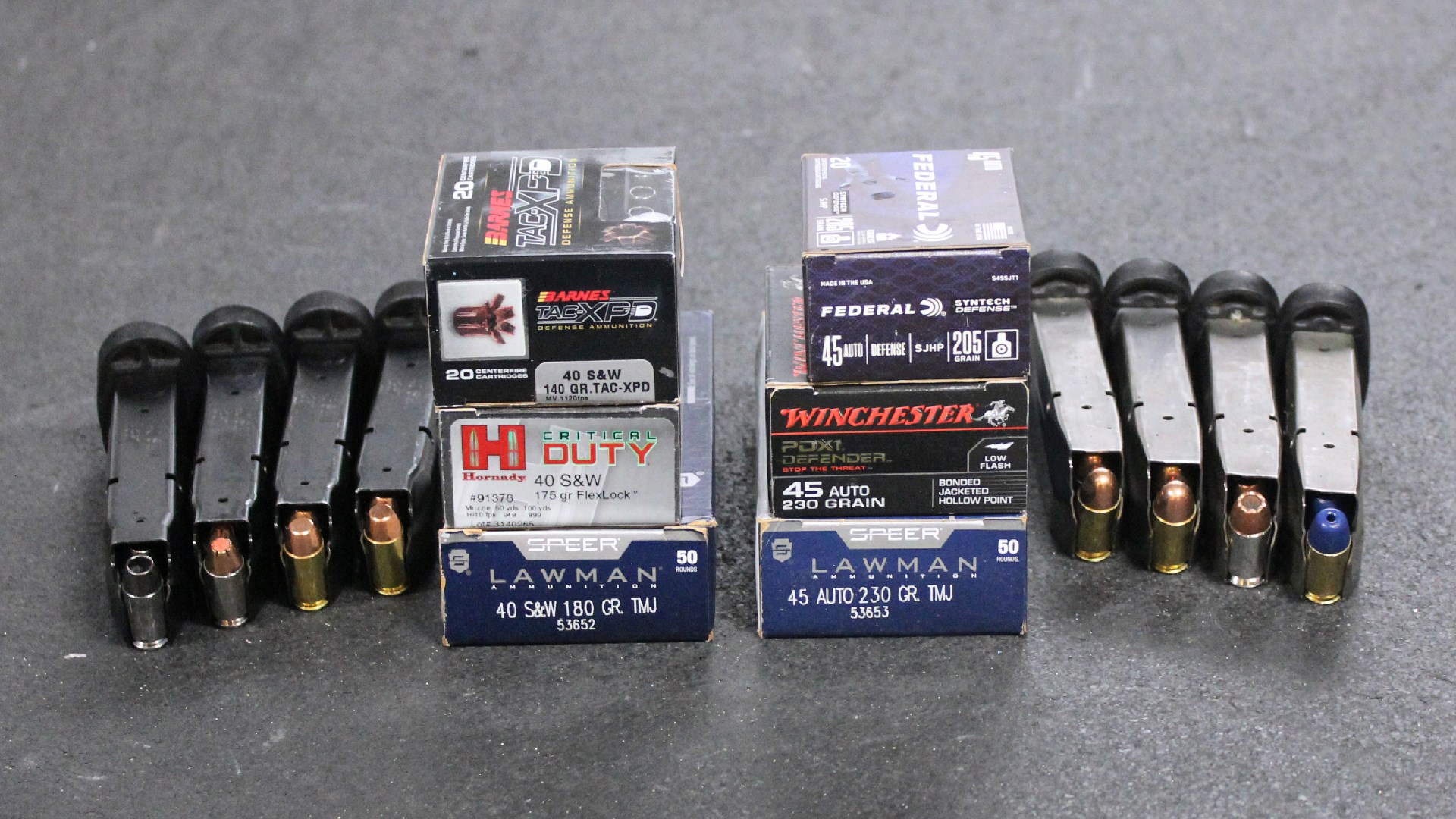
When the M&P pistol sale was announced, AIM Surplus was also stocking a Front Sight branded OTW Kydex holster with adjustable and removable belt loops for $19.95. In my mind, that’s right about where a holster like this should be priced. The holster shown here will fit 9 mm, .40 S&W and .45 ACP models. It's a basic holster, but it holds the pistol high and tight to the body for concealed carry with a cover garment. That will do nicely for the price. Front Sight OTW dual magazine pouches were also available with the same adjustable and removable belt loops on sale for $4.95. The pouches have a rubber gasket and screw tension adjustment to ensure a proper fit for the magazines.
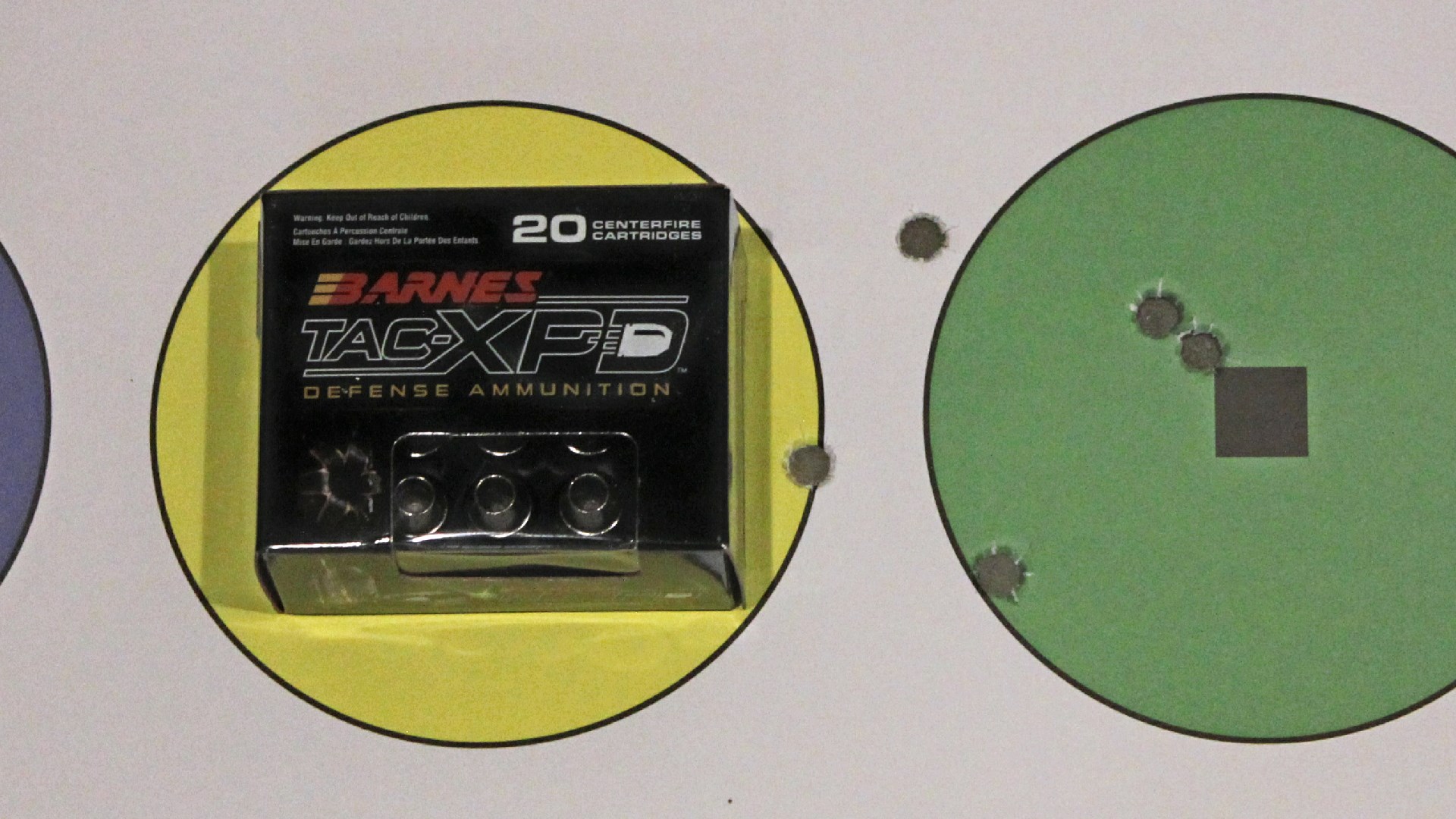
Range Time
A common compliment paid to the early model M&P big-bore pistols was the careful attention given to the polymer frame's grip shape. I have to agree with others who say the .45 ACP model's grip has a slim and comfortable feel that is much more like that of a 9 mm pistol. It makes a big difference to have a better hand-to-grip fit when managing the fairly stout levels of felt recoil produced by .45 ACP ammunition,or the snappy recoil qualities of the .40 S&W. One of the positives that comes with used pistols like these ones is that they are nicely broken-in with a smoother and cleaner feel to the controls and the trigger.
With the .45 ACP model sporting a 4" barrel, I went ahead and tested both pistols at a distance of 15 yards so as to be able to maintain a side-by-side comparison for the shooting results. Both M&P pistols, along with all eight magazines, proved to be utterly reliable with all of the ammunition used for formal and informal testing, which included practice and premium-grade loads.

Formal bench-rested accuracy results consisted of five, five-shot groups fired with three different loads in each caliber. In addition to firearms and support gear, AIM Surplus also stocks ammunition. They kindly provided the Speer Lawmen practice-grade loads used with both pistols. The defensive loads for the .40 S&W also included Hornady Critical Duty and Barnes Tac-XPD offerings with Federal Syntech and Winchester PDX-1 rounding out the .45 ACP test set. A Garmin Xero C1 Pro chronograph was used to measure bullet velocities for 10-shot strings.

Parting Shots
It seems likely that the first question folks will have about these budget-priced pistol rigs would be this: After testing them, would you put these guns and gear sets to work in the field? The answer is yes. The Kydex holsters and pouches are sturdy, well made and do just what they are supposed to do. The used magazines were utterly reliable and operated as expected.
As for the M&P pistols, they exude that air of Smith & Wesson quality, whether they are brand-new or comfortably broken-in. They exemplify the reason I keep pointing readers back to LE trade-in gear, namely, you get a level of quality and reliability at a used price that is not likely to be found in factory-fresh pistols at the same price. This makes guns like these used M&Ps a great fit for folks on a tight budget, for use as back-ups, trunk guns or for more casual collectors looking to branch out without breaking the bank. For more information about these LE trade-in pistols, and other affordable products, visit aimsurplus.com.













